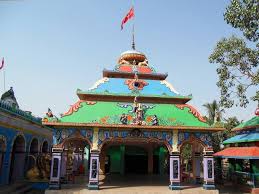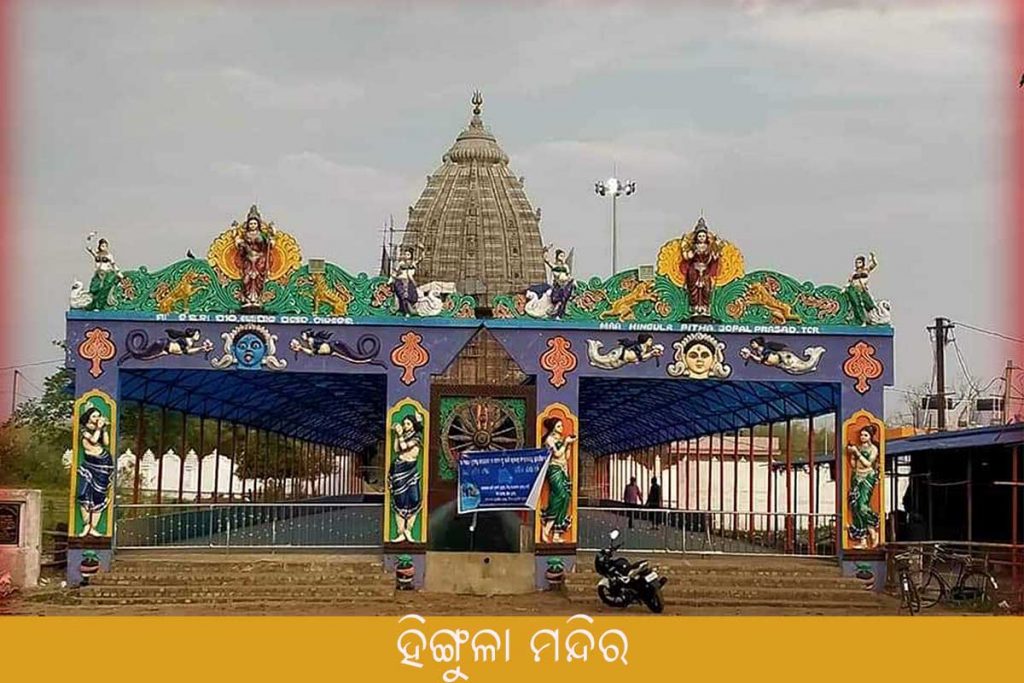
The Hingula Temple (Hingula Peetha) is located in the village of Gopalprasad in the Talcher Fort. The fiery silver mother Param Vaishnavi Narayani went to Ashtava Mahavidya when she went to kill Shumbha Nishumba and kill Subal and Dunduvi. Ma Hingula is one of those eight Mahavidyas. According to popular legend, the Hingula in Talcher was the site of the Hingula fire, which erupted in the Singda River flowing here. Eventually it was converted to Hingulapith. Ma Hingula Nandaraja was worshiped in the Vidharva as the state’s goddess. By the grace of his mother, King Nanda was always immortal. The food prepared in Hingula’s glory was delicious. At that time, Gajapati Maharaj was looking for a way to make the Mahaprasad prepared at the temple in Puri very delicious. After receiving a dream order, he took refuge in Ma Hingula. Pleased with the worship and devotion of the Maharaja, Maa Hingula conquered the kitchen of the temple. From his glory, Mahaprasad and other delicacies prepared in the kitchen of the temple were delicious. On the way to Ma Hingula Shrikshetra, it was located at Gopal Prasad in Talcher Fort and was known as Hingula Peetha. According to the pedestal under Tantra Chudamani, the Brahmarandra (forehead part of the head) of the goddess Sati fell on the place called Hingalaja according to the pedestal under Tantra Chudamani in relation to this superpower Hingula of the original seat. The Maa Hingula Temple is located at the top of the Makran mountain range, 120 km from the triangular land of the Indus River in present-day Pakistan. The part where Mata Sati Mastakar wears the scarlet fell on the Talcher area of Odisha. The goddess is worshiped there as Hingula because the color of the vermilion is Hingal.
Shri Kshetra Jagannath’s relationship with the goddess Hingula Peetha in Gopalgarh is described in the Puranas. During the arrival of Goddess Hingula’s Shri Kshetra along with Vidarbha Narapati Nal, the goddess Nal informed the king that she would have her workplace at the Shakti Peetha and the Jagannath Temple at Gopal Prasad. According to the legend, Hingula had no place of worship before. Ever since the worship of the goddess here, or since the Hingula worship in Talcher, which is still practiced as a mother, it is based on religion, faith, devotion and folk culture. According to the origin of the goddess Hingula or the arrival of the goddess in this area, the fire worshiper of the advanced civilization established a fire puja or goddess Hingula here. The fire form of the goddess on the coal altar at the uva site of the goddess Hingula is a primitive form of descending fire worship. The goddess Hingula or Hingulai is derived from the word Hingula. Which is an Ayurvedic medicine, Hingula or Red. In other words, the first Shakti Peetha of Hinduism is the Goddess Hingalaj, which is now the main Shakti Peetha located at the mouth of the Hingol River in the Makram Mountains in Balochistan, Pakistan. ‘Nani Ki Mandir’ in the local language which is worshiped by Hindus and Muslims. Although Muslims do not believe in Hindu deities, the local Balochi Muslims have been worshiping the goddess Hinglaja in the area long before the advent of Islam. According to Hindu mythology, she died at the Yajnakunda, unable to bear the humiliation of her husband Mahadev Shiva. The angry Shiva grabbed Sati’s half-burnt body and danced violently. Lord Vishnu disintegrated Sati’s body in the Sudarshan Chakra, which fell to 51 pieces in different parts of India and became one of the Shakti Peethas. Sati’s Brahma Randra fell on the banks of the Hingol River in the western part of India and is worshiped as the first Shakti Peetha. The goddess is on fire on this pedestal. Similarly, the volcanic temple at Kangra in Himachal Pradesh is also a fire place. Here Sati’s tongue fell. Of these Ekaban Shakti Peethas, Hinglaj and Volcano Agni Peetha. Goddess Agni is the form of fire in these two Shakti Peethas. This goddess has been worshiped since ancient times. The Hinglaja Peetha in Balochistan and the Hingula Peetha in Talcher are said to have a historical connection. The Hinglaja Shakti Peetha on the banks of the Hingol River is associated with many mythological and historical sites. The Hinglaja Peetha in Balochistan is located in a stone cave. There is a lot of mud in the area. Inside the cave, natural gas is emitted automatically, which is always reflected in flares caused by fire connections. Similarly, the Gopal Prasad in Talcher has a natural connection between the fire connection to the coal and the religious tradition that has descended on the surface of the goddess Hingula for centuries.
Of the various festivals celebrated on the pedestal of Ma Hingula throughout the year, the Basantik Puja or Hingula pilgrimage is the most popular. The Hingula pilgrimage begins on the Chaitra Shukla Paksha Vishnu Damanaka Chaturdashi. The journey lasts nine days as per the rules. Before the advent of Ma Hingula, the chief priest is given a dream order. The mother’s uterus is visible at the uterus. The Dehuri Shabari mantra is worshiped and subdued, and the worshiped mother is worshiped and the coal is collected and offered at the shrine. It is known as coal-fired rock. On the morning of the pilgrimage, the canopy provided by the king of Talcher is adjacent to the canopy. At Hingula Peetha, the devotee himself offers his offering to his deity.
Comments
comments
